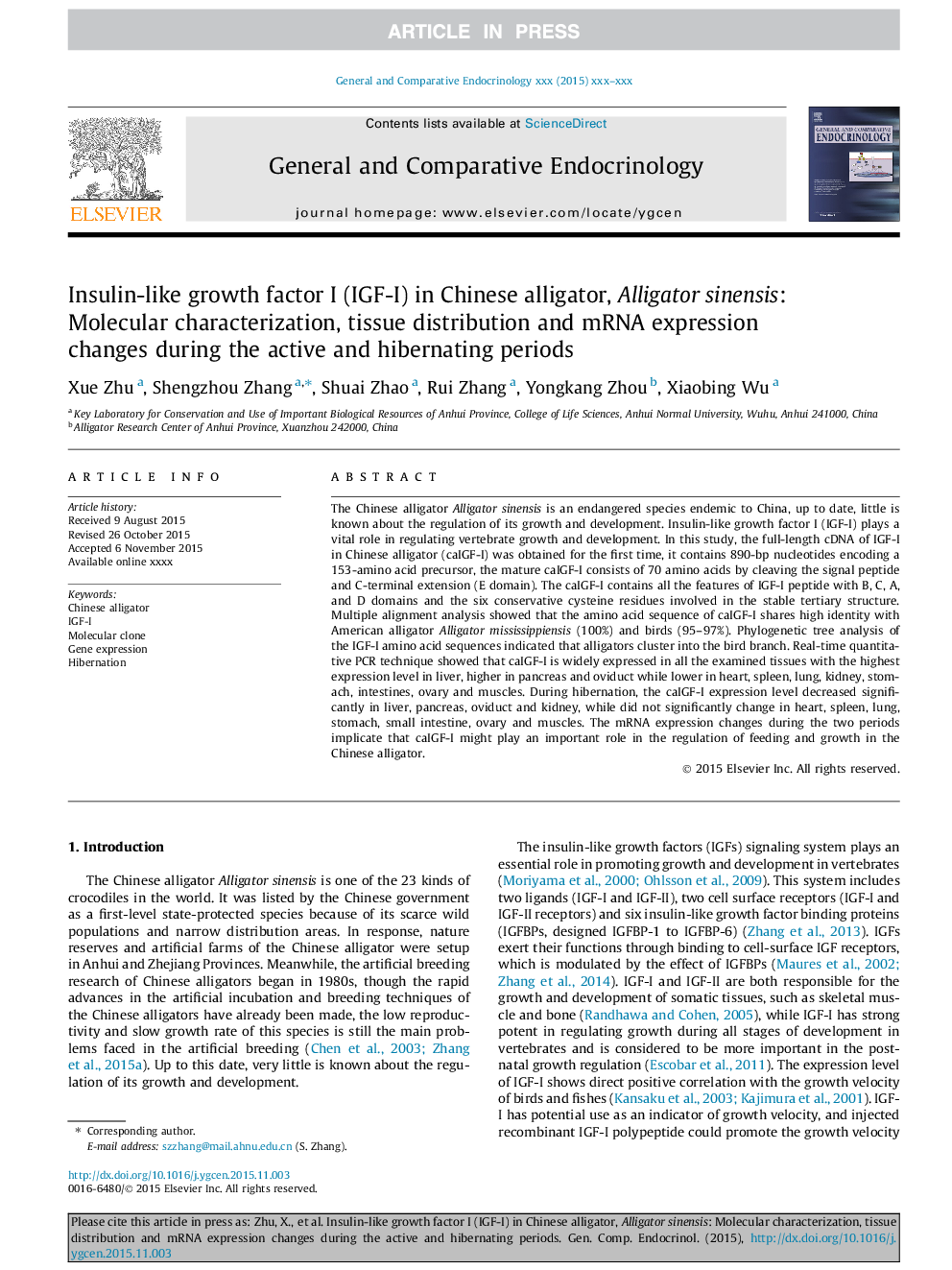| Article ID | Journal | Published Year | Pages | File Type |
|---|---|---|---|---|
| 5587852 | General and Comparative Endocrinology | 2017 | 9 Pages |
Abstract
The Chinese alligator Alligator sinensis is an endangered species endemic to China, up to date, little is known about the regulation of its growth and development. Insulin-like growth factor I (IGF-I) plays a vital role in regulating vertebrate growth and development. In this study, the full-length cDNA of IGF-I in Chinese alligator (caIGF-I) was obtained for the first time, it contains 890-bp nucleotides encoding a 153-amino acid precursor, the mature caIGF-I consists of 70 amino acids by cleaving the signal peptide and C-terminal extension (E domain). The caIGF-I contains all the features of IGF-I peptide with B, C, A, and D domains and the six conservative cysteine residues involved in the stable tertiary structure. Multiple alignment analysis showed that the amino acid sequence of caIGF-I shares high identity with American alligator Alligator mississippiensis (100%) and birds (95-97%). Phylogenetic tree analysis of the IGF-I amino acid sequences indicated that alligators cluster into the bird branch. Real-time quantitative PCR technique showed that caIGF-I is widely expressed in all the examined tissues with the highest expression level in liver, higher in pancreas and oviduct while lower in heart, spleen, lung, kidney, stomach, intestines, ovary and muscles. During hibernation, the caIGF-I expression level decreased significantly in liver, pancreas, oviduct and kidney, while did not significantly change in heart, spleen, lung, stomach, small intestine, ovary and muscles. The mRNA expression changes during the two periods implicate that caIGF-I might play an important role in the regulation of feeding and growth in the Chinese alligator.
Related Topics
Life Sciences
Biochemistry, Genetics and Molecular Biology
Endocrinology
Authors
Xue Zhu, Shengzhou Zhang, Shuai Zhao, Rui Zhang, Yongkang Zhou, Xiaobing Wu,
